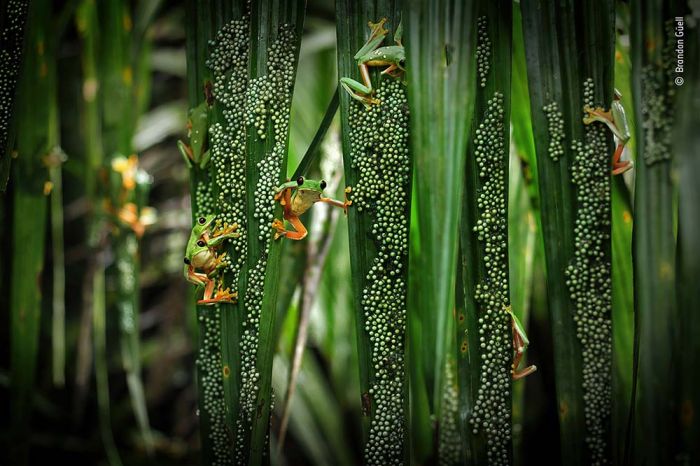Treefrog Pool Party Wall Print

Treefrog Pool Party Wall Print
Here's a summary of how to select your print. For detailed information, including frame sizes, delivery and frequently asked questions, please see our prints guide.
1. Choose the type – canvas, photographic paper or fine art paper.
2. Select the size – the options in the drop-down menu refer to the longest edge of the print before any frame is added (and includes the border). This table shows the dimensions for this print, including the actual image size.
| Longest edge (width) | Shortest edge (height) | Actual image size (width x height) |
| Canvas size (rolled or stretched) unframed | ||
| 40cm | 26.67cm | 40cm x 26.67cm |
| 60cm | 40cm | 60cm x 40cm |
| 80cm | 53.34cm | 80cm x 53.34cm |
| 100cm | 66.67cm | 100cm x 66.67cm |
| Paper size (photographic or fine art) unframed | ||
| 40cm | 29.34cm | 32cm x 21.34cm |
| 60cm | 44cm | 48cm x 32cm |
| 80cm | 58.67cm | 64cm x 42.67cm |
| 100cm | 73.34cm | 80cm x 53.34cm |
3. Pick a frame (or choose 'none'). Frame sizes vary – see the prints guide.
4. Add to basket and you're done!
In stock
Description / Treefrog Pool Party Wall Print
Treefrog Pool Party © Brandon Güell (2022). Wildlife Photographer of the Year is owned by the Natural History Museum, London.
Behaviour: Amphibians and Reptiles, Highly Commended
Male gliding treefrogs hang from the egg-studded leaflets of palm fronds surrounding a large rainforest pool on Costa Rica’s Osa Peninsula. At dawn, after torrential rain, thousands of females had arrived at the pool ready to lay their eggs. Awaiting them were males (small enough to fit in the palm of your hand and more than a centimetre smaller than the females), desperate to pass on their genes. Their aim was to grab a female and be in position to fertilize her eggs when she laid them or to oust a rival already grasping a female. But these males had so far failed in their quest.
To get his shots, Brandon waded into the murky water, chest deep, plagued by mosquitoes and hoping the two resident caimans would stick to snacking on falling frogs. Such spectacular mass-breeding events occur at only a few remote locations and only a few times a year and are hard to predict – Brandon had been up at 4am for days in anticipation of catching one.
Each female laid 200 or so eggs, creating huge egg masses, which overhung the pool. The eggs (typically 4 millimetres across) are green when freshly laid but soon reveal the developing embryos inside. Most embryos die from desiccation – an increase in dry spells resulting from climate change – predation or fungal infection; surviving tadpoles drop into the water below. With one partnerless male gazing directly at the camera and others searching across the frame, Brandon conveys the last moments of the frogs’ drive to reproduce.
About the photographer (2022)
Brandon is a National Science Foundation Predoctoral Research Fellow based at Boston University studying the reproductive and behavioural ecology of gliding treefrogs for his PhD dissertation. His interest in wildlife photography developed at the start of his PhD, initially from using it as a tool to study animal behaviour in the field. In the future, he hopes to use photography not only to communicate science but also to help inspire a passion for wildlife in others and to create advocates for conservation.
